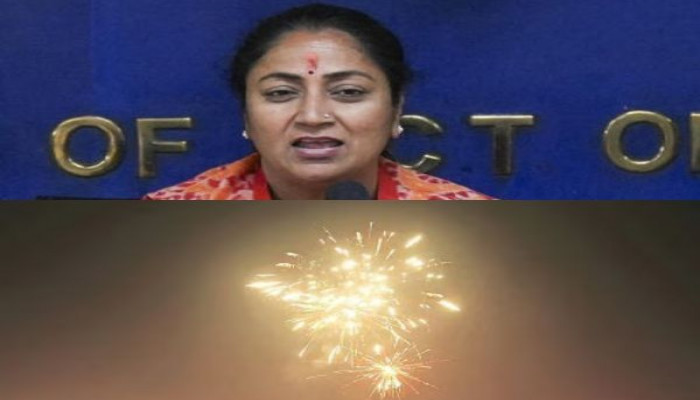Delhi government to approach Supreme Court to allow green firecrackers during Diwali
- In Reports
- 07:24 PM, Oct 07, 2025
- Myind Staff
The Delhi government on Monday announced that it will approach the Supreme Court to seek permission for the use of green firecrackers this Diwali, aiming to revive a policy that had struggled between 2018 and 2020 when enforcement failed and gains in air quality were minimal.
Chief Minister Rekha Gupta said the government will request the court to allow “certified green firecrackers” to balance “public sentiments and environmental protection.”
Speaking at the Delhi secretariat, she acknowledged that distinguishing green firecrackers from conventional ones is challenging and that the environmental benefits of green variants remain limited.
Delhi’s firecracker policy has seen several shifts over the years. A comprehensive ban was first imposed in 2017 following a Supreme Court inquiry. Green firecrackers were permitted in 2018, but from 2020 onward, the government enforced annual winter bans after implementation failed. Despite these measures, the bans were widely ignored, law enforcement could not act effectively, and air quality plummeted immediately after Diwali each year.
Delhi Environment Minister Manjinder Singh Sirsa defended the plan, noting that green firecrackers are less polluting and will be used only on a single day for a few hours. “Diwali is an important festival for Hindus where firecrackers are burst for a single day,” he said. “The CM believes the way the entire country celebrates the festival, Delhiites should be able to do the same.”
Sirsa added that the government is prepared to regulate conventional firecrackers and allow only green ones if permitted. “Teams will be deployed accordingly,” he said.
In its submission to the Delhi Pollution Control Committee, the government said it has no objection to firecracker use and considers regulated, time-bound use of green crackers with strong enforcement a “more pragmatic solution,” arguing that blanket bans have not delivered the desired results.
The Supreme Court has asked the Union Environment Ministry for Delhi’s position on firecracker bursting. The government will present its stance during the next hearing on October 8.
Green firecrackers, developed by CSIR-NEERI after the 2018 Supreme Court order, replace barium nitrate with zeolites, reduce aluminium content, and add dust suppressants. CSIR-NEERI claims these changes cut emissions by 30-35 per cent compared to traditional crackers.
Experts, however, say the reduction is still small. Green firecrackers continue to release 65-70 per cent of the pollution of conventional crackers, producing large amounts of particulate matter, sulphur dioxide, and nitrogen oxides. When millions of crackers are burst, a 30 percent per-unit reduction has little impact.
“Even when we knew people were not using green crackers, the police said they couldn’t tell the difference”, said environmental activist Bhavreen Kandhari.
A former police official highlighted enforcement challenges, noting that cracking down on non-green firecrackers will be even harder. “Firecrackers are sold openly in Delhi’s adjoining cities like Noida, Ghaziabad, Gurugram and Faridabad. The illegal supply is a menace and it’s very difficult for Delhi Police personnel to check each and every vehicle entering the city from multiple borders,” said RA Sanjeev, former joint commissioner in Delhi Police who retired in 2022.
Given this context, distinguishing what is green and what is not — something CM Gupta assured will be done — is even more difficult.
Last year’s Diwali showed repeated failures in managing air pollution in the capital, which has remained one of the most polluted cities in the world for decades.
Data from 40 monitoring stations recorded sharp spikes in fine particulate matter from around 6 pm, peaking between 11 pm and 2 am during the last Diwali. Vivek Vihar in East Delhi, for example, recorded 1,853 micrograms per cubic meter at midnight — more than 120 times the World Health Organisation’s safe limit of 15µg/m³. Nearby Patparganj reached 1,504, and Nehru Nagar in South Delhi touched 1,527.
PM2.5 particles are ultrafine and lodge deep in the respiratory tract and lungs, causing both short-term and long-term respiratory problems.
Gupta, posting on X, said the government remains “fully committed to environmental protection and pollution control.” “Hon’ble Supreme Court will be assured that the Delhi government will fully comply with all guidelines and standards of the court,” she wrote. “Our objective is—a Diwali sparkling with joy, along with a clean and safe environment.”







Comments